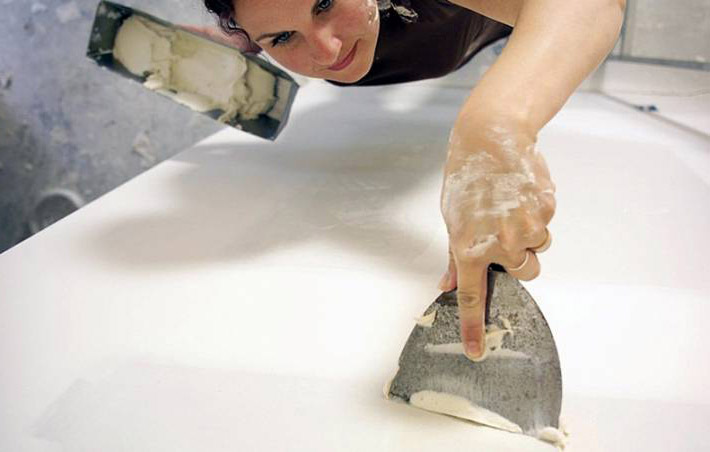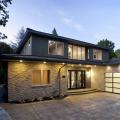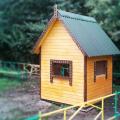Methods for leveling walls in an apartment: an overview of methods and choosing the best
The walls in the apartment occupy most of the visible structures of the house. If the floors can be covered with various materials, and the ceilings can be made hinged, then uneven walls cannot be hidden anywhere. Especially if they do not have carpets and other distracting coatings, then verticality and unevenness will be immediately noticeable. Therefore, do-it-yourself wall alignment is the best option for improving the interior of a room in a house (apartment).
During the construction of houses, all finishing work is most often carried out by contractor construction organizations, and in private buildings by hired teams. Often, their lack of control leads to differences along the entire length of the walls up to 5-10 cm. Plastering made by inept guest workers without the use of professional tools and sometimes no experience at all in finishing, forces the owner of such newly built housing to perform additional alignment of the walls when moving in.
Necessary materials and tools
To perform the alignment of the walls in the apartment, the following materials are used:
- dry building mixtures, followed by their dissolution in water (dry plaster, putty, etc.)
- panels made of plastic, metal, wood boards or drywall.
To carry out leveling with wet mixtures, you need a special tool:
- spatulas of two or three sizes (a tool with a rubber handle is recommended), the metal part should not be too soft,
- a basin with straight walls or a bucket with a capacity of 15-20 liters,
- a special mixer mounted on an electric drill (manual mixing takes a lot of time and effort),
- brushes or roller for priming,
- rule - a special tool for leveling,
- surface cleaning material.
Leveling walls is a dirty job, so you need to have working clothes made of tarpaulin material.

Sheet alignment
Due to the high labor intensity of the plastering process, many homeowners with little building experience perform wall cladding with sheet material - drywall. This method is also loved by professional teams - including because of the time savings. The panels are attached to a previously equipped metal frame or glued to the wall with special glue.
The main requirement for such work is the removal of the vertical level of the wall surface during the installation of a metal profile.
Alignment of walls with wet mixes
The most common method remains the use of a wet type of wall leveling. To perform this type of work, minimal skills in using a spatula and removing beacons are required. Wall leveling compounds can be purchased at any building materials store. There you can also find instructions for preparing solutions.
Before the main leveling stage, you need to remove the old coating from the surface (wallpaper, whitewash, paint). In necessary situations, flimsy, falling off old plaster is removed in corners and other places. In practice, the entire old coating is more often cleaned to the main concrete or brickwork.
The procedure for leveling walls begins with measuring the differences along the entire length of the wall. This can be done with a long special tool - a building level. Or by pulling any cord along the wall. The verticality of the surface is measured using a simple plumb line. In the presence of differences of not more than 30 mm, they begin to work. The largest layer of the laid plaster should not exceed the allowable dimensions.
Lighthouse Alignment
Surface preparation for painting is most often carried out according to beacons, which serve as a guide. The initial alignment of the walls with putty is carried out by applying it between the beacons and distributing the solution from the bottom up. The ends of the tool must be in contact with the surface of the beacons installed along the entire height of the wall at a certain distance from each other, corresponding to the length of the rule.
The final alignment of the walls consists in grouting the surface with a special device - a plotter. After its completion, it is recommended to apply a primer over the putty for better adhesion of the paint.
Working with spatulas
In the absence of experience with the rule, you can use two spatulas. One will serve as the "palette". It will be possible to dose the quality and quantity of the solution on it. And the other spatula, smaller, will be working. They apply a layer of the mixture to the wall. When using a spatula, it must be held at an angle of 45º to the surface. In this position, the mixture will lie flat.
Surfaces are usually carried out in three layers, with a thickness of each of at least 1.5-2 mm. The temperature in the room should not be below 10º C and the sun's rays on the applied putty should not be allowed. After applying the putty, the wall must be primed.
 Facade design of a country house: a variety of stylistic trends
Facade design of a country house: a variety of stylistic trends Wooden ceilings - 25 interior examples
Wooden ceilings - 25 interior examples How to make a children's playhouse with your own hands
How to make a children's playhouse with your own hands